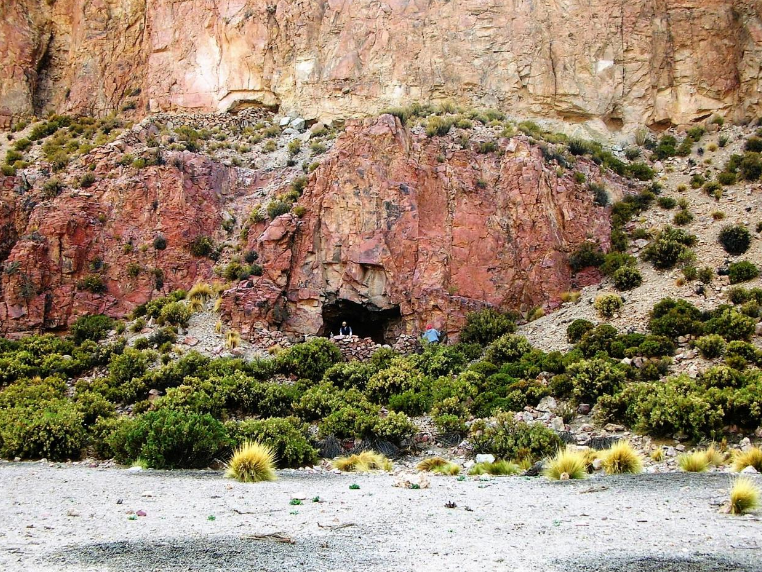Scientists uncover 1,000-year-old shamanic pouch containing ancient hallucinogens
Find in Bolivia reveals extensive knowledge of botany and existence of trade or travel across large distances

Your support helps us to tell the story
From reproductive rights to climate change to Big Tech, The Independent is on the ground when the story is developing. Whether it's investigating the financials of Elon Musk's pro-Trump PAC or producing our latest documentary, 'The A Word', which shines a light on the American women fighting for reproductive rights, we know how important it is to parse out the facts from the messaging.
At such a critical moment in US history, we need reporters on the ground. Your donation allows us to keep sending journalists to speak to both sides of the story.
The Independent is trusted by Americans across the entire political spectrum. And unlike many other quality news outlets, we choose not to lock Americans out of our reporting and analysis with paywalls. We believe quality journalism should be available to everyone, paid for by those who can afford it.
Your support makes all the difference.The remains of a fox-snout pouch believed to have been owned by a South American shaman a thousand years ago has revealed traces of powerful hallucinogenic drugs.
The ancient find indicates people were not only using single plants known to produce hallucinations, but were blending various plants to create potent compounds which could result in lengthier and more powerful trips.
Anthropologists made the rare find in the now-dry Sora River valley in southwestern Bolivia in 2010. The area has evidence of human habitation stretching back 4,000 years.
Inside a small cave they found a ritual bundle thought to have been left as part of a human burial.
The bundle – bound in a leather bag – contained, among other things, two snuffing tablets (used to pulverise psychotropic plants into snuff), a snuffing tube, for smoking hallucinogenic plants, and a pouch constructed of three fox snouts.
Radiocarbon dating revealed the age of the outer leather bag to be from between 900 to 1170AD.
The team used a scalpel to obtain a tiny scraping from the interior of the fox-snout pouch and analysed the material.
They found multiple psychoactive compounds – cocaine, benzoylecgonine (the primary metabolite of cocaine), harmine, bufotenin, dimethyltryptamine (DMT) and possibly psilocin (a compound found in some mushrooms) – which came from at least three different plant species.
The blend of drugs is very close to those used in the production of ayahuasca – a psychoactive preparation which is still taken – usually in the form of a drink – in many areas of the Amazon basin.
“We already knew that psychotropics were important in the spiritual and religious activities of the societies of the south-central Andes, but we did not know that these people were using so many different compounds and possibly combining them together,” said Jose Capriles, assistant professor of anthropology at Penn State University.
“This is the largest number of psychoactive substances ever found in a single archaeological assemblage from South America.”
According to Dr Capriles, the fox-snout pouch likely belonged to a shaman.
“Shamans were ritual specialists who had knowledge of plants and how to use them as mechanisms to engage with supernatural beings, including venerated ancestors who were thought to exist in other realms,” he said.
“It is possible that the shaman who owned this pouch consumed multiple different plants simultaneously to produce different effects or extend his or her hallucinations.”
Melanie Miller, of the University of Otago, New Zealand, and research affiliate at the University of California, Berkeley, who was responsible for analysing the samples, said the plants found in the pouch did not grow in the local area and may indicate trade networks across large areas of South America, as well as also indicating a strong knowledge of botany.
She said: “The presence of these compounds indicates the owner of this kit had access to at least three plants with psychoactive compounds, but potentially even four or five.
“None of the psychoactive compounds we found come from plants that grow in this area of the Andes, indicating either the presence of elaborate exchange networks or the movement of this individual across diverse environments to procure these special plants. This discovery reminds us that people in the past had extensive knowledge of these powerful plants and their potential uses, and they sought them out for their medicinal and psychoactive properties.”
It has also been suggested the find answers questions about when ayahuasca was first begun to be taken as a drink.
Dr Capriles said: “Some scholars believe that ayahuasca has relatively recent origins, while others argue that it may have been used for centuries, or even millennia.
“Given the presence of harmine and DMT together in the pouch we found, it is likely that this shaman ingested these simultaneously to achieve a hallucinogenic state, either through a beverage, such as ayahuasca, or through a composite snuff that contained these plants in a single mixture. This finding suggests that ayahuasca may have been used up to 1,000 years ago.”
The study is published in the Proceedings of the National Academy of Sciences.
Join our commenting forum
Join thought-provoking conversations, follow other Independent readers and see their replies
Comments